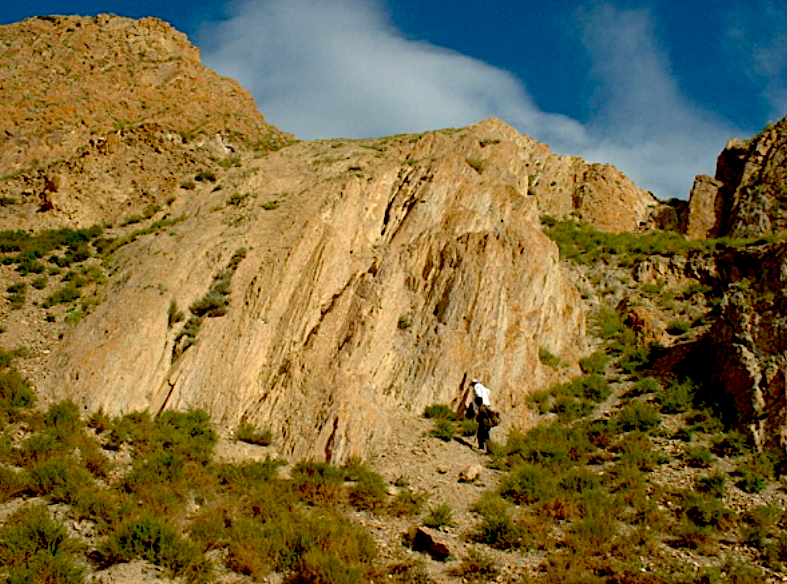Sangxiu Fm
Type Locality and Naming
Himalayan North Belt. The Sangxiu Formation was erected by Wang Naiwen, Liu Guifang and Chen Guoming. The section for the designation is at the Sangxiu hill of the Kadong Village of the Nagarze County, Xizang (90°07′E; 28°05′N). The reference section is from the Gongboxue to Bajiutang through the Shelangre mountain (91°00′E; 28°06′N).
[Figures: Type section of Sangxiu Formation in Kadong of Nagarze County, southern Xizang (Tibet)[
Lithology and Thickness
The Sangxiu Formation is divided into two members. Lower member is built up by gray and blue gray macrocrystalline and microcrystalline andesite with gray siliceous shale, with a thickness of 50 m. Upper member gray and grayish green silty shale with thin-bedded sandstone, richly bearing ammonite fauna, with a thickness of 150 m.
[Figure: Lower part of Sangxiu Formation in type section of Nagarze County]
[Figure: Upper part of Sangxiu Formation in type section of Nagarze County]
Relationships and Distribution
Lower contact
Upper contact
Overlain by Jiabula Fm (revised interpretation by Dangpeng Xi, Xiaoqiao Wan et al. (2019,
Regional extent
The present formation occurs in the Duoque, Gongboxue and Rongduo of the Nagarze County, Xizang. It is 200-250 m thick.
GeoJSON
Fossils
The shale beds of the lower part of the Sangxiu Formation in Nagarze yield the nannofossils Tubodiscus verenae, Diazomatolithus lehmanii, Calcicalathina oblongata, Speetonia colligata, Polycostella senaria, Manivitella pemmatoidea and Watznaueria barnesae, and ammonites Haplophylloceras aff. strigile, H. substrigile, Pterolytoceras exoticum, Phylloceras serum, Neocosmoceras subhooker, N. aff. hystricoidum, Colliptychoceras walkeri, C. calliptychus, C. constrictus, Thurmanniceras kingi, Sarasinella nagarzensis, Neocomites theodorfi, N. montanus, N. indomontanus, Kilianella cf. leptosoma, K. roubaudi, Olccostephanus cf. sublaevis, Valanginites xizangensis, etc. The fossil group of the Sangxiu Formation is similar to that from the lower part of the Jiabula Fm in Gyangze. Although the abundance of the species is relatively lower. By fossil correlation, the age of this fossil assemblage is assigned as Early Cretaceous.
Age
Depositional setting
It is quite persistent in lithology and belongs to normal neritic deposition accompanied by volcanic eruption.
Additional Information


